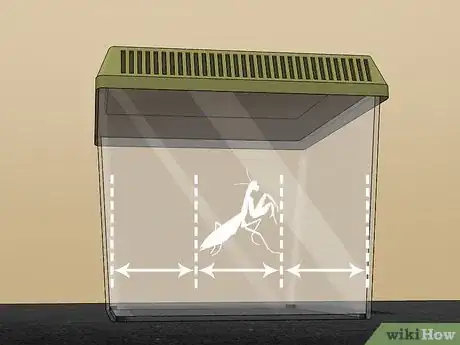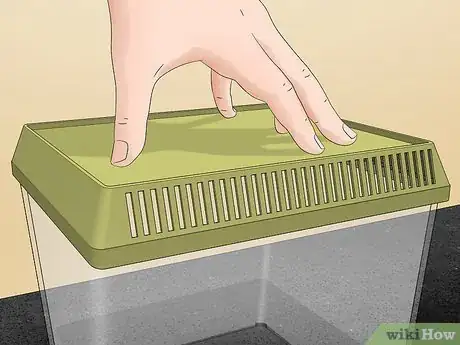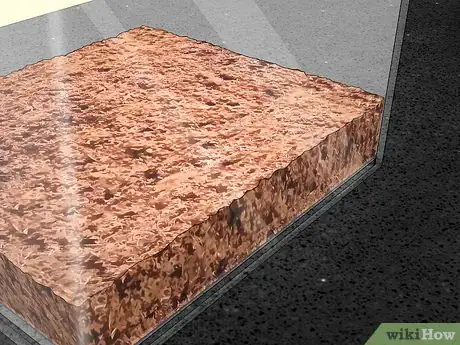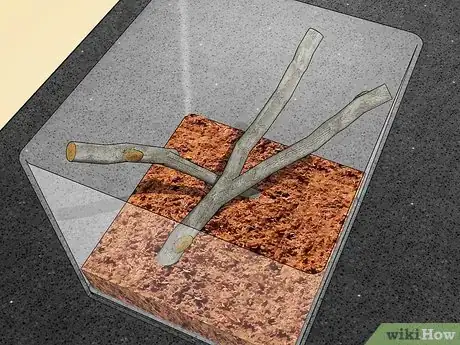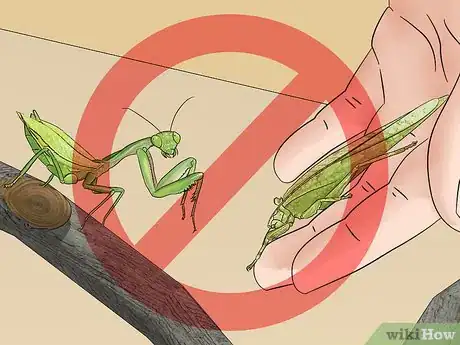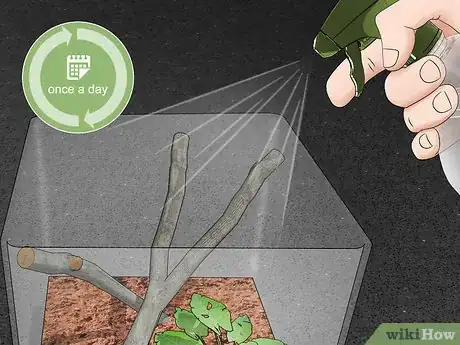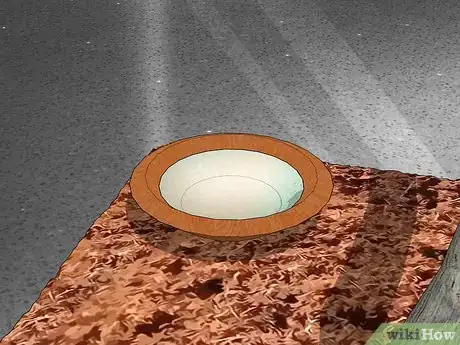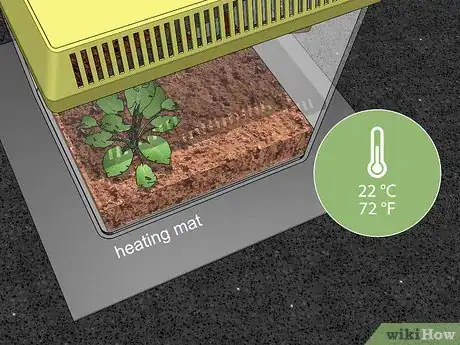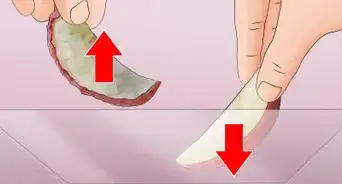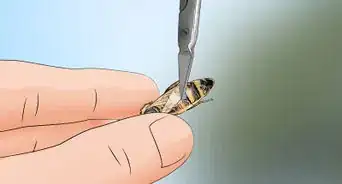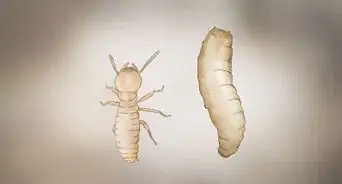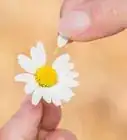This article was co-authored by wikiHow Staff. Our trained team of editors and researchers validate articles for accuracy and comprehensiveness. wikiHow's Content Management Team carefully monitors the work from our editorial staff to ensure that each article is backed by trusted research and meets our high quality standards.
wikiHow marks an article as reader-approved once it receives enough positive feedback. In this case, 91% of readers who voted found the article helpful, earning it our reader-approved status.
This article has been viewed 77,738 times.
Learn more...
Praying mantises are interesting and interactive pets that can be kept inside. Making their habitat is a quick and easy process. Simply source a suitable container, add coconut husk and some sticks, and then spray it with water to keep it humid. If you feel creative, add a few plastic flowers or trees to the enclosure to decorate it. Enjoy watching your praying mantis climb around its new habitat.
Steps
Choosing a Container
-
1Choose a container that is 3 times longer than the mantis and twice its width. This gives the praying mantis plenty of room to walk around and shed its coat. This is important, as the mantis can lose mobility in its limbs if it is unable to move around freely.[1]
- Use a ruler to estimate the size of your praying mantis.
- For example, if your mantis is approximately 0.5 inches (1.3 cm) wide and 2 inches (5.1 cm) long, the container would need to be 1 inch (2.5 cm) wide and 6 inches (15 cm) long.
- Purchase an insect terrarium from a pet shop or recycle a clean container from home.
- Plastic or wooden containers work best for this activity, as cardboard will warp and become soggy over time.
-
2Attach a lid to the container to prevent the mantis from escaping. Praying mantises are good climbers and can easily climb up the items in their enclosures. Place a lid or a cover over your container to keep the mantis in the habitat.[2]
- If your container doesn’t have a lid, place a piece of plywood over the container instead.
Advertisement -
3Provide ventilation holes to allow fresh air into the container. It is important to have more than 1 ventilation hole, as this allows the air to circulate inside the habitat and stops the container from going mouldy. If your container doesn’t have ventilation holes, use scissors or a drill to make 6 small holes in the enclosure.[3]
- Make sure that the ventilation holes are smaller than the width of the praying mantis to avoid it escaping.
Adding Items to the Habitat
-
1Cover the bottom of the container with damp coconut husk. Lightly mist the coconut husk with water until the top of the husk is covered with a thin layer of water. This will cause it to expand up to 5 times its regular size. Spread the expanded coconut husk over the bottom of the enclosure until the entire base is covered with approximately 1 inch (2.5 cm) of substrate.[4]
- Coconut husk is also called coir.
- The damp coconut husk will help to keep the enclosure humid.
- Purchase coconut husk from a pet shop.
-
2Place clean sticks from your garden into the habitat. This gives something for the praying mantis to climb on in their enclosure. Rinse the sticks in water to clean off any dirt or poisonous spiders. If possible, choose a small branch with lots of arms, as this provides multiple sticks for the praying mantis to climb on.[5]
- Use a pair of secateurs to trim the sticks down to the size of your container.
- The size of the dish doesn’t matter; however larger water containers are easier, as they don’t need to be refilled as often.
-
3Add plastic decorations to the container if you want to add colour. Plastic flowers, trees, and grasses are great options. Make sure to leave plenty of room in the habitat for the praying mantis to move around.[6]
- Purchase decorations from a pet shop or a dollar store.
- Plastic decorations work best, as paper or wooden decorations can warp over time. Avoid using any decorations that contain visible glue, as this can poison the praying mantis.
-
4Don’t place any other insects in the habitat. Praying mantises like to eat live insects. This means that if you place other insects in their container, they will likely be eaten. If you want to keep other insects as pets, it is best to make them a separate habitat.[7]
Adding Heat and Humidity to the Habitat
-
1Mist the habitat with water once a day. Praying mantises like to live in warm and humid areas. Spray a light mist of water over the habitat to increase the humidity level inside the enclosure.[8]
- Adjust your spray bottle to the lightest setting in order to lightly mist the enclosure.
-
2Place a water dish in the habitat. This simulates the pools of water that are often found in humid climates. Place the dish of water on top of the coconut husk inside the enclosure. This allows the praying mantis to drink when it is thirsty.[9]
- A jar lid works well as a water dish.
-
3Keep the enclosure at 22 °C (72 °F) with a heating pad. Place a heating pad under the habitat and set the temperature dial to 22 °C (72 °F). This helps to keep the enclosure nice and warm for the praying mantis.[10]
- Purchase a heating pad from a pet shop or a vet.
Community Q&A
-
QuestionHow do I know how old my mantis is?
 FalinPerthCommunity AnswerMantises are born in spring, and most die in winter. Assuming you caught your mantis in the wild, count back to the first warm days in your location.
FalinPerthCommunity AnswerMantises are born in spring, and most die in winter. Assuming you caught your mantis in the wild, count back to the first warm days in your location. -
QuestionHow do I know if my mantis is a girl or a boy?
 Community AnswerAdult females are larger and stockier than males; the females generally don't fly, while the males can.
Community AnswerAdult females are larger and stockier than males; the females generally don't fly, while the males can. -
QuestionWhat do praying mantis' eat?
 Community AnswerMost mantises eat meal worms, cockroaches, fruitflies and other bugs that you can buy online or in stores.
Community AnswerMost mantises eat meal worms, cockroaches, fruitflies and other bugs that you can buy online or in stores.
References
- ↑ https://www.keepinginsects.com/praying-mantis/care/
- ↑ https://youtu.be/REIIeXKPk6k?t=240
- ↑ https://youtu.be/REIIeXKPk6k?t=105
- ↑ https://youtu.be/REIIeXKPk6k?t=174
- ↑ https://youtu.be/REIIeXKPk6k?t=240
- ↑ https://www.keepinginsects.com/praying-mantis/care/
- ↑ https://www.amentsoc.org/insects/caresheets/praying-mantids.html
- ↑ https://www.keepinginsects.com/praying-mantis/care/
- ↑ https://www.amentsoc.org/insects/caresheets/praying-mantids.html
About This Article
To make a praying mantis habitat, start by getting a plastic or wooden container that's at least 3 times longer and 2 times wider than your praying mantis. Then, poke several small holes in the container so air can get in. Next, line the bottom of the container with damp coconut husk, and add clean sticks from your garden so your praying mantis has things to climb on. Finally, place a dish of water in the habitat for when your praying mantis is thirsty. To learn how to keep the habitat warm enough for your praying mantis, scroll down!
